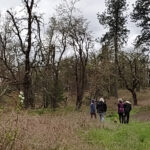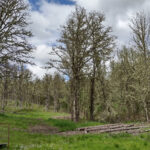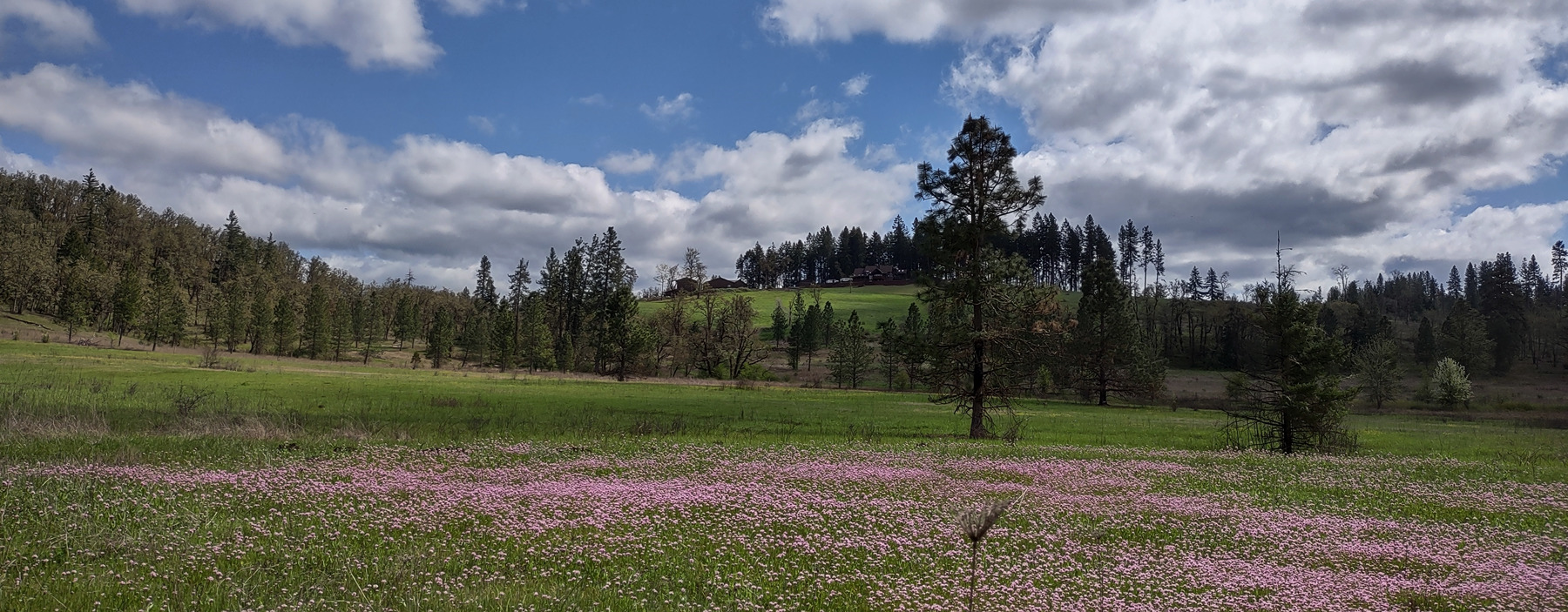Thursday, July 13th, 2023 from 6 – 8:30 p.m. FREE
Approximately 8 miles west of downtown Eugene off Crow Road
Exact address|Directions|Parking Information will be sent with Registration Confirmation
Join us on July 13, 2023, for a summer evening tour of an extensive restoration project that encompasses 4 landowner’s properties. These neighbors are cooperatively working to restore a total of over 300 acres of Oak Habitat in Southwest Eugene. This evening walk is in two parts, one about 1.5 miles and the other about 1 mile. You can participate in both parts or only one of your choice. While the tour is FREE, due to the arrangements necessary for a tour of this size, we are requesting that you register on the form below.
The tour will include both graveled roadway and walking in grass/turf. Sturdy shoes or boots are recommended. Be aware that poison oak is prevalent in this area, so if you have an allergy be prepared to take precautions. Parking will be available in a large pasture. We will be providing snack/food bars and will have water in a beverage cooler (please bring a water bottle to fill). There will be portable toilets in the parking area.
 The site is in the area where the hills begin rising from the valley floor at the southern end of the Willamette Valley. The parcels are just off Crow Road, south of Highway 126, among rolling hills, farms, and forests. This project represents a history of relationship-building, grant writing, and the vision of landowner neighbors to restore a large Oak Uplands area. The four families; Ken and Val Kime, Don and Janet Blair, Dan and Jenifer Clausen and Jon and Dana Texter (and daughter, Anchen) have worked for several years to cooperatively restore this large tract of acreage. All four families are hosting this event and will lead various parts of this tour and share with you the work that has been done and what remains to complete the project.
The site is in the area where the hills begin rising from the valley floor at the southern end of the Willamette Valley. The parcels are just off Crow Road, south of Highway 126, among rolling hills, farms, and forests. This project represents a history of relationship-building, grant writing, and the vision of landowner neighbors to restore a large Oak Uplands area. The four families; Ken and Val Kime, Don and Janet Blair, Dan and Jenifer Clausen and Jon and Dana Texter (and daughter, Anchen) have worked for several years to cooperatively restore this large tract of acreage. All four families are hosting this event and will lead various parts of this tour and share with you the work that has been done and what remains to complete the project.
In the Willamette Valley, oaks were originally found in a mosaic of prairies, oak savanna, and riparian habitats throughout the valley floor and low-elevation slopes. Oaks were most common on flat to moderately rolling terrain, usually in drier landscapes, and often between prairie remnants and conifer forests. Today, oak woodlands generally are found in small, isolated pockets surrounded by other land uses, such as development or agriculture.

Approximately two million acres of prairie, savanna, and woodland habitat existed in the Willamette Valley prior to European settlement and supported a wide diversity of plant and animal species including several endemic to the Willamette Basin. Oak habitats were historically maintained by indigenous people in the valley with regular, low intensity burning that supported ecological and cultural vitality. These fires favored fire-tolerant and sun-loving mature oaks, prevented the establishment of Douglas firs and other conifers, and reduced the understory shrubs and small trees. These fire-maintained oak habitats resulted in widely spaced, large, open-branching oak trees with a clear understory dominated by fire-tolerant grasses and forbs and some scattered shrubs and small trees. In the absence of fire, fast-growing tall conifer trees like Douglas fir often encroach and overtop the oaks, which need space and sunlight to thrive. Since fire suppression and the exclusion of native people with European settlement starting in the 1850s, oak habitats and the species that depend on them have declined significantly, with less than 10% of oak habitats remaining and numerous bird and plant species listed as species of concern.
Because much of the remaining oak woodlands are in private ownership and maintenance of these habitats requires active management, cooperative incentive-based approaches, like this project, are crucial to conservation. A helpful summary of oak habitat management in the south Willamette Valley can be found on the Rivers to Ridges website.

